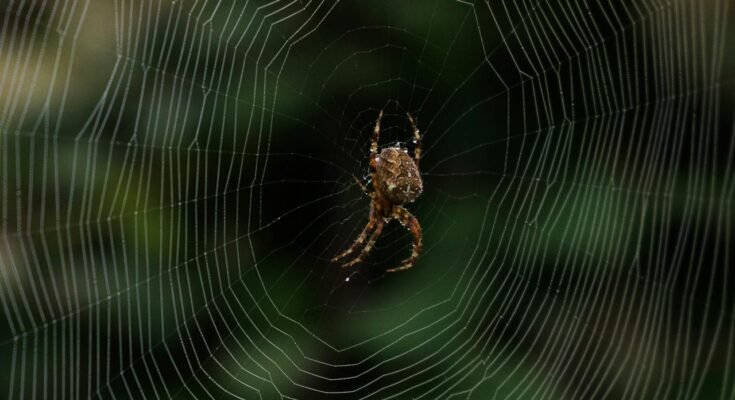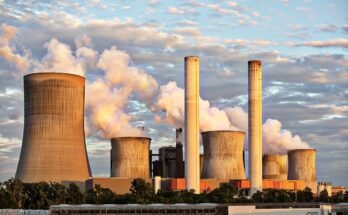Ecosystems are dynamic communities of organisms and their environment. The habitat in which these organisms exist is at least a complex set of physical, chemical and biological factors. Different aspects interact with each other to create particular conditions of life for the living beings inside an ecosystem. In order to gain a complete understanding of the complexity of an ecosystem, it is important to explore these factors, how they each relate to one another. These layers refer to the different contributing factors that help to maintain the health and functioning of the ecosystem.
1. Environmental Components (Abiotic Factors)
ABIOTIC FACTORS Physical factors or abiotic components, these are the non-living aspects of an ecosystem, and they affect living organisms. These elements include:
- Temperature: the warmth or coldness of the surroundings is a determining factor for the organisms surviving in that region. Tropical ecosystems are populated by species adapted to hot weather; polar ecosystems by species adapted to extreme cold.
- Light: Photosynthesis, the process through which plants and certain microorganisms create energy, requires sunlight. Light is also critical in behaviors such as animal migration, reproduction and feeding.
- Water: Water is a basic necessity for all life. The ecosystem depends on whether or not this is present; freshwater ecosystems (such as rivers and lakes) or marine ecosystems (oceans and seas). Water quality — think pH, salinity and other water factors — can also affect whether an aquatic species thrives.
- Soil and nutrients: Soil quality, texture and nutrient content affect plant growth, which further drives herbivores and the predators that depend on them. Soil contains millions of microorganisms that play a part in nutrient cycles.
- Climate: The long-term weather patterns and climatic conditions dictate what kind of ecosystems can be supported in an area. The climate also affects the timing of seasonal behavior in plants and animals, including migration, hibernation and flowering.
2. Biotic factors (Biotic interactions)
Environmental chemical factors are natural and artificial compounds which affect (i.e. influence) organisms. The combination of air, water and pollutants and other chemicals. The main chemical factors are the following:
- Functional Gases: oxygen and carbon dioxide The availability of oxygen in the air or water is critical for the survival of many organisms whereas carbon dioxide is at the center of climate governance and serves to feed the plants.
- pH Levels: The acid–base level of water or soil can both dramatically impact the survival of organisms. Many freshwater organisms prefer neutral environments, but some species are able to tolerate more acidic or alkaline environments.
- Essential Nutrients: Elements like nitrogen, phosphorus, and potassium are needed by plants to thrive. These nutrients can be present or absent, and dictate this limiting factor of plant species distribution that ultimately impacts the whole food web.
- Toxins and Pollutants: The presence of toxic substances, like heavy metals, pesticides, and plastics, can have detrimental effects on ecosystems. Other contaminants potentially bioaccumulate and pose a health threat to multiple organisms, including humans.
3. Biological Factors (Living Components of the Environment)
biological factors: the biotic components of an ecosystem, including organisms of all trophic levels, from primary producers to top predators. All these have an important role in maintaining the equilibrium and energy flow in an ecosystem. A few key biological creations are:
- Producers (Autotrophs): Plants, algae and some bacteria are producers who convert sunlight into usable energy through the process of photosynthesis. They are the base of the food chain feeding herbivores and others spanning energy over.
- Consumers (Heterotrophs):◦ Consumers (Heterotrophs): Consumers are members of an ecosystem that ingests other members of the community. These organisms rely on producers or other consumers for nutrients. In every ecosystem, consumers –the animals in the case of the food web– help to regulate populations and keep things balanced.
- Decomposers: Fungi, bacteria, and other microorganisms that break down dead organic material and return nutrients to the soil or water. This process is critical for nutrient cycling and for sustaining ecosystems.
- Mutualistic Interactions: Many species exist in mutualism, balancing their populations in ways that result in benefit to one or both of the parties involved. Mutualism, commensalism, and parasitism are common symbiotic relationships that affect the dynamics of a/ an ecosystem.
4. How Those Layers Work Together
The secret to recognizing ecosystems is to understand that these physical, chemical and biological elements do not work alone. Rather, they are closely intertwined and shape each other. For example:
- (Make the case that light and water are physical factors that shape the growth of biological relationships (plants), which support biological relationships (herbivores), which are eaten by another level of biology (predators).
- Soil fertility (a biological element), which is a result of chemical processes such as nitrogen fixation (a biological and chemical interaction), can also contribute to plant growth (a biological factor).
- Climate changes (physical factors) can impact chemical compositions of the atmosphere and oceans, influencing species distributions and the health of ecosystems.
Conclusion
To sum up, ecosystems are complex and multi-faceted, deeply influenced by the interplay between physical, chemical, and biological concepts. Interactions between such factors are crucial for upholding ecosystem stability, biodiversity, and the services these organisms render for all life, including in human-like language. Delineating these factors into separate layers allows for a clearer understanding of ecosystem functionality and the response of ecosystems to natural and anthropogenic change. This scientific endeavor is one that we can only hope will vie with our more destructive inclinations, giving us a chance to measure and meditate and work toward protecting the delicate balance of life that sustains us and our planet.



